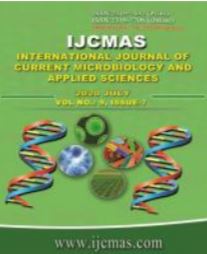


 National Academy of Agricultural Sciences (NAAS)
National Academy of Agricultural Sciences (NAAS)

|
PRINT ISSN : 2319-7692
Online ISSN : 2319-7706 Issues : 12 per year Publisher : Excellent Publishers Email : editorijcmas@gmail.com / submit@ijcmas.com Editor-in-chief: Dr.M.Prakash Index Copernicus ICV 2018: 95.39 NAAS RATING 2020: 5.38 |
A field experiment was carried out at the Instrutional-Cum-Research farm. Assam Agricultural University, Jorhat in the year of 2017-18, during rabi season. The treatment consisted of two different factors, viz., four dates of sowing 31stOctober (D1), 10th November (D2), 20th November (D3) and 30th November (D4) and three row spacing 60 cm x 20 cm (S1), 45 cm x 20 cm (S2) and 30 cm x 20 cm (S3). Experimental findings revealed that almost all the growth attributes such as plant height, number of leaves per plant, leaf area index, dry matter accumulation per plant, crop growth rate and baby corn yield were significantly influenced by different dates of sowing. In most of cases early sowing on 31st October and 10th November were statistically at par and shown their superiority over late sowing on 20th November and 30th November sown crop. The dates of sowing showed significant difference on harvest duration of baby corn. The highest harvest duration was found in 31st October sown crop which was statistically at par with 10th November sown crop. Results showed that at 50, 75 DAS and and at harvest spacing 30 cm x 20 cm recorded significantly higher plant height and crop growth rate over those of 45 cm x 20 cm and 60 cm x 20 cm spacing . The maximum number of leaves plant-1 and maximum baby corn yield were recorded under the spacing of 45 cm x 20 cm (S2) which were significantly higher than other. The highest leaf area index and harvest duration was recorded under the spacing of 60 cm x 20 cm (S1) which was significantly higher than those for all other row spacing at 60 DAS and at tasseling.
 |
 |
 |
 |
 |